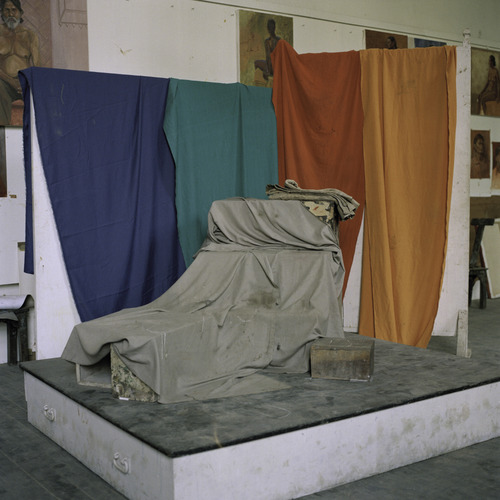Tamara Shopsin is the author of the upcoming Mumbai New York Scranton, which will be published on March 12. (Miranda July said of the book, “Could not. Put. It down.”) It’s a compellingly disjointed memoir about travel, marriage, illness and the interesting and strange connective details that we notice to make sense of life. Shopsin is an illustrator and graphic designer (and daughter of Kenny Shopsin; she grew up in the family business, the notorious New York greasy spoon Shopsin’s, and contributed to his brilliant cookbook, Eat Me) and is married to the photographer Jason Fulford, who contributed 62 photographs to the book. They spoke about her process in choosing the images.

TAMARA SHOPSIN: So you just turned your contact sheets over to me. Weren’t you scared?
JASON FULFORD: I knew you’d give me veto power.
TS: But so much of your photography is editing.
JF: That’s true. It’s all about context. But this was your story. I mean I was there, but you’re the one telling the story. I was curious to see which pictures you would choose. You picked a lot of ones that I consider B-sides. What were you looking for in the contact sheets?
TS: I’d written the text and knew where I wanted to put in pictures, for pacing. So then I was looking for images that would complement the text rather than directly illustrate it. For example, this section of the story at an old art school in Mumbai: “The most action we see is a half finished sculpture of two greek gods wrestling.“ I picked this picture…

instead of this one…

TS: Your B-sides are not like other people’s B-sides. There was no danger of a stock photo or tourist snapshot. You shoot film and get 12 photos to a roll. Every picture has a reason. I’ve seen you get out the camera, sidestep, focus, wait 15 minutes for a cloud to pass, then say “not gonna do it” and walk on. Sometimes I picked a photo because I knew it wouldn’t make it out of the archive any other way.
JF: This reminds me of a something that happened last spring. I was visiting Richard Misrach at his studio in Oakland. He has a substantial archive of 8×10 negatives that he’s shot, with a contact print of each. They’re stored in two rooms—one large room of the published work, and a much larger room of the unpublished. I wonder what’ll happen to the contents of the second room. I looked through a few boxes, and there is some gold in there.
TS: One man’s trash… You remember that watch Gus found in the dumpster?
JF: Yeah, the one you can set to say TIME TO FUCK. It was in my truck when it got broken into, and the robber separated all the silver change out and left the pennies and the watch. What’s your favorite picture in the book?

TS: You took this picture before we met. I first saw it reading your book Crushed on the floor of Paul’s office. I read it as a metaphor for being lonely and it somehow made me feel less lonely. Then as I grew to know and love Scranton [where they live] it became more about that. Knowing the car was in the parking lot of Giant (supermarket), seeing moments like that with you all the time.




